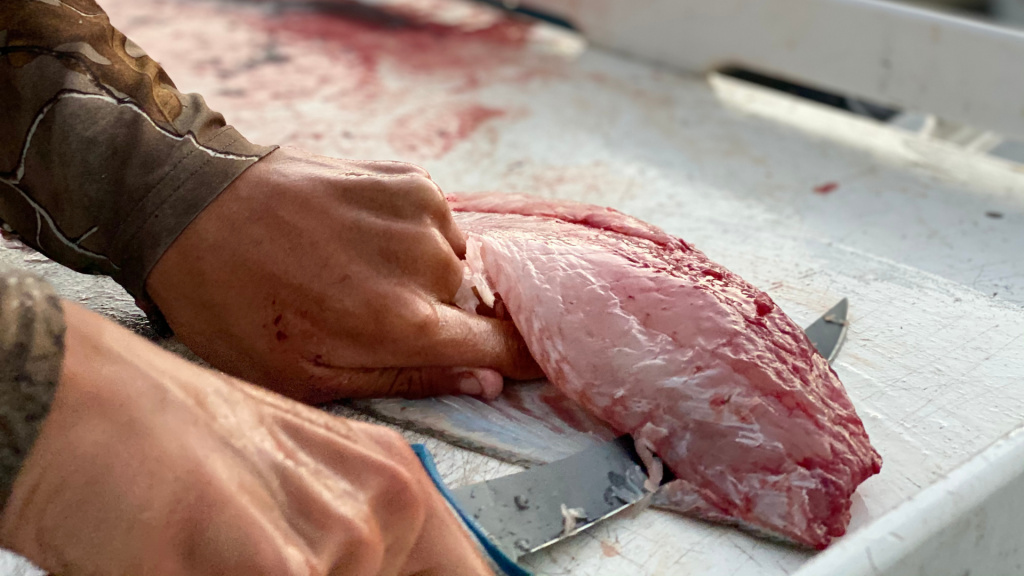Skinning a fish can seem intimidating, but learning how to do it is easier than you might think. When skinning fish, you remove the fatty covering (known in fish cooking as the “scales”). This helps the fish cook more evenly and allows you to eat the fish in pieces—which can be pretty messy. The procedure will also remove any bones or entrails, which can be difficult to chew and swallow.
Removing the skin afterwards is the better option for firmer fish, such as cod, flounder, haddock, and halibut. Just be sure you don’t eat the skin, as it can cause a blockage in your digestive system. Fish have many bones and spines that are hard to remove, which often results in a mess.
To remove scales, start at the tail and work your way towards the head. Hold the fish in one hand. Place one hand on top of the fish and the other hand underneath. With your free hand, carefully grip it by the tail, and carefully pull your hand away from the fish. Again, grip it by the tail and carefully pull your hand away from the fish with your free hand. With your free hand, grasp the fish by the head and pull it through to the belly.
Place your fish on the cutting board. Remove the head by slicing through the top. To remove the innards, slice through the side of the fish, then split it in half. With your knife, cut the skin down to the flesh. The solution to this is skinning a fish. You can use some tools to skin your fish easily.
Fillet Knife
The fillet knife, also commonly referred to as the fish knife, is a knife that is exclusively used for filleting. It is typically used for fish but works just as well for preparing meat. It is a relatively small knife with a blade that’s about 1-inch long, so it’s well suited to slicing fish fillets or small pieces of meat. The blade is narrow, which helps it to slice through the flesh of fish easily, and the handle is narrow as well, so there’s less chance of your hand slipping off the handle.
Boning Knife
Boning fish can be a tricky task, but you can make things easier by buying a boning knife. They are versatile knives designed to cut through bones and skin easily. There are a few boning knives, including boning knife blades and boning knife sets. Boning knife blades are single-blade knives ideal for smaller fish, such as flounder, perch, trout, and other small varieties.
Fishbone Tweezers
Fishbone tweezers are an offshoot of regular tweezers, perfect for picking up small, delicate objects like beads, pins, and threads. They also work well for catching small, slender things like fishbones. Fishbone tweezers are like needle-nose pliers with a tiny tweezer at the tip. They are generally made of stainless steel with durable rubber handles. When you squeeze them, the tweezer tip opens, and the prongs embedded in it grab onto small bones, threads, and pins.
Deba
Skinning a fish is simple, but learning how to skin a fish is your first tip. The first thing you need to know is that the skin on fish is edible—it’s like a layer of armour. A Deba knife is a Japanese fillet knife, which is longer than a normal fillet knife and thinner in width. It is used for filleting fish, removing the skin, and for cutting around bones. The blade of a Deba knife is made of high-carbon steel, so it is sharp enough to cut through fish.
The Deba knife has a smaller tip than a normal fillet knife, and the matched handle is wider and shorter than a normal fillet knife. This is a multi-purpose knife and cutting board combo. It’s perfect for slicing and dicing fish fillets. The blade is made of aluminium oxide ceramic, which is sharp and corrosion-resistant.

